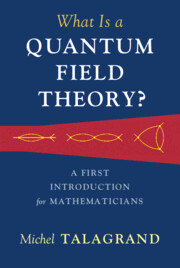Book contents
- Frontmatter
- Dedication
- Contents
- Introduction
- PART I Basics
- Part II Spin
- Part III Interactions
- 11 Perturbation Theory
- 12 Scattering, the Scattering Matrix and Cross-Sections
- 13 The Scattering Matrix in Perturbation Theory
- 14 Interacting Quantum Fields
- Part IV Renormalization
- Part V Complements
- Solutions to Selected Exercises
- Reading Suggestions
- References
- Index
14 - Interacting Quantum Fields
from Part III - Interactions
Published online by Cambridge University Press: 22 February 2022
- Frontmatter
- Dedication
- Contents
- Introduction
- PART I Basics
- Part II Spin
- Part III Interactions
- 11 Perturbation Theory
- 12 Scattering, the Scattering Matrix and Cross-Sections
- 13 The Scattering Matrix in Perturbation Theory
- 14 Interacting Quantum Fields
- Part IV Renormalization
- Part V Complements
- Solutions to Selected Exercises
- Reading Suggestions
- References
- Index
Summary
This chapter enters “theoretical physics”, giving significant examples of the arguments by which physicists try to justify the success of their methods. Formal series in diagrams take a life of their own. A major discovery is that the parameter which is called m in the model, and which is supposed to represent the mass of the particle cannot possibly be the mass of the particle as it is measured in the laboratory. In other words, self-interaction changes the mass of the particle. This is the phenomenon of mass renormalization. We also approach an even deeper mystery, the phenomenon of field renormalization, which forces us to revisit the method we used in Chapter 13 to compute the S-matrix. We also explain why all these efforts barely provide any convincing support of the physicist’s methods, because these use a huge leap of faith which is mostly kept implicit in their work.
Keywords
Information
- Type
- Chapter
- Information
- What Is a Quantum Field Theory? , pp. 420 - 470Publisher: Cambridge University PressPrint publication year: 2022
